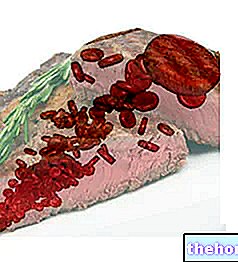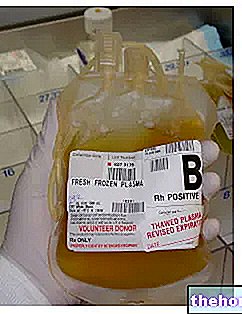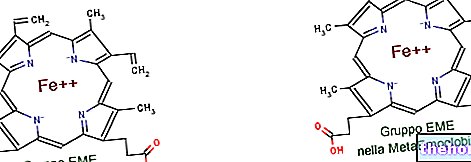Plasmapheresis consists in taking blood from a subject, with immediate separation of the liquid component from the corpuscular one (red blood cells, white blood cells and thrombocytes); all thanks to the help of an automated mechanical separator, which divides the two components by centrifugation.

Plasmapheresis is a fundamental procedure for the production of so-called plasma-derived drugs. In fact, in the liquid component of the blood we find considerable quantities of proteins, therefore antibodies (immunoglobulins), peptide hormones, coagulation factors and proteins necessary for the transport of insoluble substances. In the plasma there are also respiratory gases and all the various nutrients (glucose, vitamins, amino acids, fatty acids, etc.).
The protein component of plasma is essential for the production of drugs to be used in patients with deficiency of specific plasma substances; subjects affected by haemophilia A and B, for example, have a strong deficiency of coagulation factors VIII or IX, which can be extracted and purified from the donor's plasma and then administered to the recipient.
Furthermore, the "whole" plasma can be administered as it is to patients suffering from particular pathologies, which require it to be replaced due to an excess of abnormal antibodies or other reasons.
Leaving the field of donations, there is also a therapeutic plasmapheresis, aimed at the simple removal of excess plasma molecules (bilirubin, LDL, etc.). In these cases, the more correct term is given by the name of the isolated pathogenic molecule, followed by term apheresis (from "afero", to take away).
Questions and answers on plasmapheresis (plasma donation)
HOW MUCH PLASMA IS TAKEN? Normally, 500 ml of plasma is withdrawn during plasmapheresis. The donation can be made once every three months but also once every 14 days; according to the law in force, it is in fact possible to make up to 20 donations of plasma of 500ml per year.
IS PLASMAPHERESIS DANGEROUS FOR THE DONOR'S HEALTH? The plasma volume is immediately compensated through the integration of liquids orally (by drinking before and after collection), or by infusion of physiological solutions during the return of the cells.
The lost protein components are instead replaced within three days (coagulation factors and fibrinogen are recovered in 24 hours, immunoglobulins in 48 and complement c3 within 72 hours).
WHAT FEATURES MUST THE DONOR HAVE? To be eligible for plasmapheresis, the donor must weigh more than 50 kg, be between 18 and 55-60 years of age, and meet a number of requirements, such as protein above 6 grams / dL, higher platelet count. to 200,000 / mL, and hemoglobin values greater than 12.5 g / dL if male, or 11.5 g / dL if female. Although the plasma is tested for the presence of infectious diseases (viral hepatitis, AIDS, etc.) it is important that the donor does not have risky sexual intercourse. Furthermore, it is essential to declare to the doctor the intake of any drug, in order to evaluate the opportunity of a possible postponement of the donation.
We remind you that the donor has the right to one day of paid rest (for employees) and periodic and free medical and laboratory checks (hemoglobin, transaminase, azotemia, triglyceridemia, glycaemia, ferritinemia, cholesterolemia, hepatitis B and C, AIDS, and all those that are appropriate).
HOW LONG DO THE PLASMAFERESIS PROCEDURES LAST? The duration of the donation increases as the hematocrit increases and as the blood flow guaranteed by the sampling vein decreases. On average, it takes 40 minutes, with fluctuations ranging from 30 to 60 minutes based on the aforementioned factors. During this period of time, 2 to 3 cycles are completed, consisting of two separate phases, one of which is for collection, separation and accumulation, and one for reinfusion of the corpuscle component.
WHAT DOES ACD-A MEAN? It is a solution of citric acid and dextrose, used as an anticoagulant during plasmapheresis (ACD-A = Anticoagulant Citrate Dextrose Solution A). We are talking about a safe drug, which can only cause a temporary decrease in calcium, signaled by the appearance of tingling lips. If this symptom does not resolve within a few minutes, it is sufficient to take a calcium tablet to make the continuation of plasmapheresis more comfortable.




























